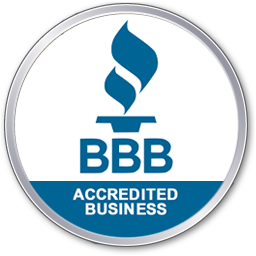Executive Summary
- Lead-based paints were commonly used in older homes built before 1978.
- Exposure to lead can harm vital organs like the brain and kidneys. It can also lead to behavioral problems, learning disabilities, and seizures—children and pregnant women are exceptionally vulnerable to lead hazards.
- Sometimes, lead-based paint can be identified when it crackles and chips away, leaving behind a chalky residue. However, the only way to know for sure is by having a professional use a kit or an X-ray fluorescence (XRF) analyzer.
- Painted surfaces should be regularly inspected and maintained to reduce lead exposure. Environmental remediation specialists can also perform lead abatement, encapsulating, removing, and replacing contaminated surfaces.
Pinpointing Lead-Based Paint Hazards in Older Homes
Older homes constructed before 1978 were frequently painted with lead-based paints. Unfortunately, exposure to lead-based paint can damage the brain, nerves, kidneys, and blood supply, causing behavioral issues, learning disabilities, seizures, or, in extreme cases, death.
Proactively identifying lead hazards throughout your property is an excellent way to keep inhabitants safe and healthy. Sometimes, lead-based paint can peel and leave behind scale-like patterns and a chalky residue, but you must officially test your paint for an accurate assessment. There are several ways to perform lead testing, including sample-taking kits and X-ray fluorescence (XRF) analyzers.
To keep yourself safe and avoid further exposure, do not try to test or remove lead-based paint by yourself. Instead, have a professional environmental remediation team survey your property and perform lead abatement as necessary.
Understanding Lead-Based Paint Hazards
Lead-based paint is cheap, durable, and washable, so it was commonly used in houses before the United States federal government banned it in 1978 due to potential health hazards.
Millions of homes still have lead-based paint, but several layers of new paint usually cover them. Typically, if the new paint is in good condition, the health risks posed by the lead-based paint below are mitigated. Still, the lead can harm the house’s inhabitants if the top layers exhibit deterioration, such as peeling, chipping, and dampness.
How Does Lead Harm People?
Lead is a toxic heavy metal that disrupts bodily functions. When someone is exposed to lead by touching or ingesting it, it can harm vital organs like their brain, kidneys, and reproductive systems. Children and pregnant people are exceptionally susceptible to lead hazards, but lead can harm anyone.
Some of the most common ways people come into contact with lead are when:
- Homes are renovated, and layers of lead-based paint are exposed.
- Lead-based paint flakes off the house’s exterior and falls onto the ground, and then people touch the lead-contaminated soil or track it inside.
- Painted surfaces, such as windows, doors, railings, and porches, experience a lot of wear and tear, eroding the new protective layer of paint and exposing the old lead-based paint.
- Children chew on surfaces that contain hidden layers of lead-based paint.
- Dust is generated from the abrasion of surfaces with lead-based paint.
Sometimes, people are exposed to lead-contaminated water or products with lead, like old toys or jewelry, but lead-based paint and lead-contaminated dust are the most common sources of lead poisoning.
Regulations for Lead-Based Paint
The Environmental Protection Agency (EPA) is mandated to regulate lead-based paint risks under Title IV of the Toxic Substances Control Act and the Residential Lead-Based Paint Hazard Reduction Act of 1992. Some of EPA’s lead-based paint-related initiatives include:
- Lead Renovation, Repair, and Painting (RRP) Program Rule – Workers performing RRP in child-occupied facilities or residences built before 1978 are required to become certified in lead-safe practices and provide lead safety details before they start working.
- Lead Abatement Program: Training and Certification Program for Lead-based Paint Activities – Specific training and certification is required for those performing lead abatement, risk assessments, and inspections in pre-1978 residences or child-occupied facilities.
- Residential Lead-Based Paint Disclosure Program – Potential buyers must be given comprehensive information about lead and its dangers before buying a property built before 1978. Purchasers also have the right to conduct their own lead inspection if desired.
- Residential Hazard Standards and Clearance Levels for Lead in Paint, Dust, and Soil – This sets strict guidelines and clearance levels that restrict hazardous levels of lead in paint, dust, and soil in residential areas.
Although EPA has helped reduce the prevalence of lead-based paint, it may still be present in your home, especially if it was built before 1978. Therefore, lead testing for homeowners with older properties is crucial.
How to Identify Lead-Based Paint in Your Home
Many houses have covered lead-based paint in layers of lead-free paint that make it hard to identify. You should look for indicators that your home may have lead-based paint. The following tasks can help you gauge the likelihood of this.
Find out the Age of Your House
Generally, older homes are more likely to have lead-based paint. According to the EPA, 87% of homes built before 1940 featured lead-based paint, while 69% of homes built between 1940-1959 and 24% of homes built between 1960-1977 did. If you have a house built before 1978, you should have its paint professionally tested for lead to guarantee your safety.
Identify Signs of Damaged Paint
If you notice damaged paint cracking or peeling and revealing reptile scale-like layers, this may be a sign that lead-based paint was covered up and is now being exposed. Usually, damaged lead-based paint leaves behind a white, powdery residue. You should not touch or breathe in particles from deteriorated paint—have a professional assess your property before reentering that area of your house.
Check for Symptoms of Lead Poisoning
Sometimes, lead exposure can result in behavioral issues, learning difficulties, seizures, and, in severe situations, death. Other symptoms that lead poisoning can cause are:
- Headaches
- Nausea
- Stomachaches
- Fatigue
- Irritability
Unfortunately, lead poisoning in children can occur without any symptoms, so if you think your house contains lead-based paint, you should have it tested by an environmental remediation team to avoid lead-induced developmental problems.
Using DIY Lead Testing Kits
Some people purchase their own DIY lead testing kit, which usually requires extracting a paint sample. Considering this procedure can increase your risk of lead exposure, EPA suggests exercising extreme caution, using one of the EPA-recognized kits, and following a guide to lead testing. Rather than performing this test yourself, you should hire an experienced professional to use the kit on your behalf to minimize the risk of adverse health effects.
Hire Professional Lead Testing Specialists
Using professional lead testing services is the best way to ensure accurate readings. Environmental remediation companies have the educational backing and experience to use sampling kits or advanced technology like XRF analyzers, which shoot X-ray beams into paint samples to calculate energy signatures and determine lead amounts.
If they detect hazards during testing, most environmental specialists can also remove lead-based paint, solving the problem quickly and effectively.
Expert Support Against The Risks of Lead
From lead paint testing to soil sampling, Alpha Environmental keeps your property safe from potential lead exposure.
Addressing Lead-Based Paint Hazards
If you notice signs of lead exposure or believe lead-based paint is exposed in your house, you should carefully contain the area by shutting doors, vents, and other exit points. Limit access to that area or evacuate the property entirely, and avoid reentering until a licensed professional performs safe and effective lead removal.
Although each case of lead-based paint may require a unique approach, most specialists use the following lead abatement techniques:
- Encapsulation – A specialist might isolate exposed lead-based paint by brushing or applying a special coating that produces a watertight seal.
- Cover up – The exposed lead-based paint can be covered with new layers of lead-free paint, drywall, aluminum, or vinyl cladding. However, if the new surface is removed or damaged, the lead-based paint may be revealed again.
- Removal – Some specialists remove lead-based paint by using a non-flammable solvent and wire brushing or wet hand scraping. Liquid paint removers can work on small surfaces like window sills and doors.
Removals are usually the most expensive solution and may require large-scale replacements and renovations afterward. Encapsulations and coverups can be enough to avoid lead exposure if you are careful and take preventative measures.
Preventing Lead Exposure in the Future
To prevent lead exposure, you should perform routine inspections and maintenance. Some preventative measures you can take are:
- Plan regular paint examinations, especially if your home was built before 1978.
- Monitor paint deterioration by looking for indicators like flaking or cracking.
- Promptly address any areas of concern to mitigate deterioration and avoid lead exposure.
Tips for Renovating With the Potential of Lead-Based Paint
You should also be extra careful when renovating or repainting your home to minimize the risk of exposing lead-based paint that may be hidden under newer layers. Some precautionary steps you can take are:
- Having professionals perform lead testing before restoration projects.
- Using containment techniques like plastic sheeting and adequate ventilation to reduce the spread of lead dust.
- Saturating surfaces by spraying them to minimize lead dust before sanding or scraping.
- Put on the proper personal protective equipment, such as masks, goggles, and gloves, to avoid ingesting or inhaling lead dust.
- After renovations, thoroughly clean the area using wet mops and HEPA vacuums to remove lead dust.
- Ensure you properly dispose of renovation material to avoid contaminating the surrounding area.
You should employ a licensed lead abatement professional if there are significant lead dangers or if the renovation project is substantial.
How Alpha Environmental Can Help
Lead can disrupt bodily functions and cause life-altering effects, so lead testing is crucial, especially in older homes where lead-based paint may have been used. If lead is discovered during tests, having a specialist perform lead abatement can reduce lead hazards. Sometimes, the exposed area can be safely covered up, but having the specialist remove the lead entirely is the best way to eliminate the problem.
Alpha Environmental offers professional and reliable lead testing and abatement services. Our skilled team of environmental remediators has over 21 years of experience protecting the people of Portland, Oregon, from lead hazards. With our help, you can obtain peace of mind and know that your property is safe and free of hazardous lead levels.




